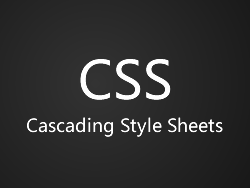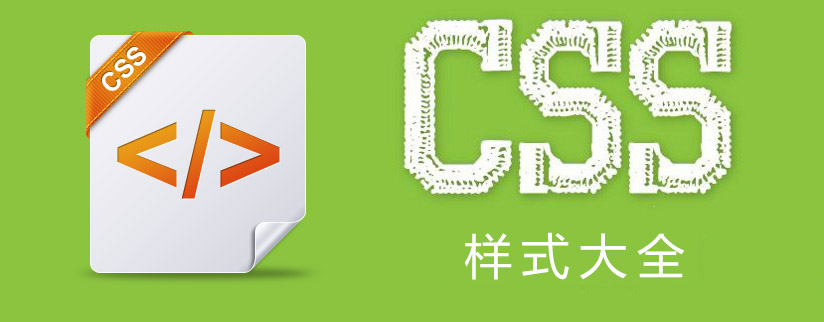Detailed introduction to common CSS properties
In the previous times, we talked about the id selector and class selector respectively, as well as their differences and connections. Let’s explore the magical classes and pseudo-elements together. In fact, I was confused about pseudo-classes and pseudo-elements before, but now I decided to peel off its mysterious coat. First of all, what is a pseudo-class? What are pseudo elements? Understanding of pseudo-classes and pseudo-elements: Official explanation: Pseudo-classes were initially used to represent the dynamic status of some elements, typically the various statuses of commonly used links (link, active, hover, visited). Later, the CSS2 standard was expanded Its conceptual scope makes it a "ghost" category for all logically existing but unidentified categories in the document tree. Pseudo elements represent the sub-elements of a certain element. Although this sub-element exists logically, it does not actually exist in the document tree, such as the after, before, etc. we usually use. My rough understanding is that a pseudo-class is a class that does not need to be identified, and a pseudo-element is an element, but it does not exist in the document tree. Regarding usage: pseudo-classes are preceded by a colon, and pseudo-elements are preceded by two colons. E:first-child pseudo-class, E::fir
1. Summary of css common attributes pseudo-elements and pseudo-elements
Introduction: In the previous times, we talked about the id selector and class selector respectively, as well as their differences and connections. Let’s explore the magical classes and pseudo-elements together.
2. CSS commonly used attributes color and unit

##Introduction: In writing CSS code, estimating color and unit is essential. However, there are many ways to write color and unit values in CSS, so it is necessary to clarify it.
3. Initial summary of common css properties: id and class selectors

Introduction: A preliminary summary of common CSS properties. The first bullet: id and class selectors

Introduction: Regarding CSS attributes, I recommend reading the manual for more details and convenience. I will classify several common attributes here and Simply take a few common attribute values, only for people like me who are just learning front-end as a starting point.
5. Summary of Common CSS Properties Four

6.
Summary of Common CSS Properties Three

7.
Summary of common CSS properties 2

8.
Summary of common CSS properties one
Introduction: ********* CSS common properties *********z-index:auto (default value) retrieves or sets the stacking order of objects. For parallel objects, the larger the value of this attribute parameter, the higher they will be stacked on top. For example, this attribute of two objects has 9. CSS common attributes and values_html/css_WEB-ITnose Introduction: CSS common properties and values
The above is the detailed content of Detailed introduction to common CSS properties. For more information, please follow other related articles on the PHP Chinese website!

Hot AI Tools

Undresser.AI Undress
AI-powered app for creating realistic nude photos

AI Clothes Remover
Online AI tool for removing clothes from photos.

Undress AI Tool
Undress images for free

Clothoff.io
AI clothes remover

Video Face Swap
Swap faces in any video effortlessly with our completely free AI face swap tool!

Hot Article

Hot Tools

Notepad++7.3.1
Easy-to-use and free code editor

SublimeText3 Chinese version
Chinese version, very easy to use

Zend Studio 13.0.1
Powerful PHP integrated development environment

Dreamweaver CS6
Visual web development tools

SublimeText3 Mac version
God-level code editing software (SublimeText3)

Hot Topics
 Vue 3
Apr 02, 2025 pm 06:32 PM
Vue 3
Apr 02, 2025 pm 06:32 PM
It's out! Congrats to the Vue team for getting it done, I know it was a massive effort and a long time coming. All new docs, as well.
 Building an Ethereum app using Redwood.js and Fauna
Mar 28, 2025 am 09:18 AM
Building an Ethereum app using Redwood.js and Fauna
Mar 28, 2025 am 09:18 AM
With the recent climb of Bitcoin’s price over 20k $USD, and to it recently breaking 30k, I thought it’s worth taking a deep dive back into creating Ethereum
 Can you get valid CSS property values from the browser?
Apr 02, 2025 pm 06:17 PM
Can you get valid CSS property values from the browser?
Apr 02, 2025 pm 06:17 PM
I had someone write in with this very legit question. Lea just blogged about how you can get valid CSS properties themselves from the browser. That's like this.
 Stacked Cards with Sticky Positioning and a Dash of Sass
Apr 03, 2025 am 10:30 AM
Stacked Cards with Sticky Positioning and a Dash of Sass
Apr 03, 2025 am 10:30 AM
The other day, I spotted this particularly lovely bit from Corey Ginnivan’s website where a collection of cards stack on top of one another as you scroll.
 A bit on ci/cd
Apr 02, 2025 pm 06:21 PM
A bit on ci/cd
Apr 02, 2025 pm 06:21 PM
I'd say "website" fits better than "mobile app" but I like this framing from Max Lynch:
 Comparing Browsers for Responsive Design
Apr 02, 2025 pm 06:25 PM
Comparing Browsers for Responsive Design
Apr 02, 2025 pm 06:25 PM
There are a number of these desktop apps where the goal is showing your site at different dimensions all at the same time. So you can, for example, be writing
 Using Markdown and Localization in the WordPress Block Editor
Apr 02, 2025 am 04:27 AM
Using Markdown and Localization in the WordPress Block Editor
Apr 02, 2025 am 04:27 AM
If we need to show documentation to the user directly in the WordPress editor, what is the best way to do it?
 Why are the purple slashed areas in the Flex layout mistakenly considered 'overflow space'?
Apr 05, 2025 pm 05:51 PM
Why are the purple slashed areas in the Flex layout mistakenly considered 'overflow space'?
Apr 05, 2025 pm 05:51 PM
Questions about purple slash areas in Flex layouts When using Flex layouts, you may encounter some confusing phenomena, such as in the developer tools (d...






